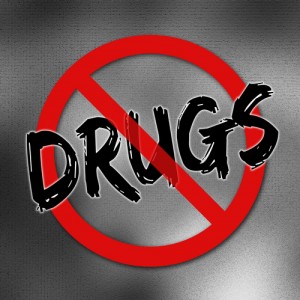 It may come as a startling fact that nearly 10% of employees in America’s work force use drugs in their place of work according to the Drug Free Workplace. It is estimated that 20% of the workers in the age bracket of 18 to 25 abuse drugs while on the job. In the age bracket of 26 to 24 years of age, it is estimated that a little over 12 % of the workers abuse drugs on the job. In America today, the estimated cost of drug use in the workplace, both directly and indirectly, amounts to more than $100 billion per year.
It may come as a startling fact that nearly 10% of employees in America’s work force use drugs in their place of work according to the Drug Free Workplace. It is estimated that 20% of the workers in the age bracket of 18 to 25 abuse drugs while on the job. In the age bracket of 26 to 24 years of age, it is estimated that a little over 12 % of the workers abuse drugs on the job. In America today, the estimated cost of drug use in the workplace, both directly and indirectly, amounts to more than $100 billion per year.
Damage to the Workplace
Damage caused by drugs and drug abuse can be both obvious, and rather insidious. For example, according to the US Chamber of Commerce, employees abusing drugs incur 300% higher medical costs and benefits, thereby increasing health insurance rates overall. On an individual production level, a substance abuser functions at an estimated 67% of their potential capacity, are 3 times more likely to arrive late for work, and 2.5 times more likely to be absent for eight or more days at a time, collectively with an absence rate of 30 to 25 days/year.
Because drugs and substance abuse is so damaging in the workplace and in so many ways, including but not limited to production-wise, financially, lessening the morale of the group, endangering the safety of fellow workers, and bringing illegal substances into the workplace in violation of the law, it behooves us to look at 5 ways to keep drugs out of the workplace.
1. Know the Signs
Learn and know the signs of drug use and abuse. Although signs may vary with different drugs, there are certain general signs that will tell the tale, including withdrawal from family, friends and co-workers, loss of interest in activities or the job itself, a noticeable drop in performance at work, an overall loss of interest in personal appearance and personal hygiene, proneness to accidents, marked inattention, absenteeism, and personality change.
2. Make the Workplace Substance Abuse Policy Known to All
It is vital for the employer to have good working policy on substance abuse, and ensure that all employees have a copy, and know and understand it. Everyone in the group needs to know the company rules regarding substance abuse, and know the consequences of breaking those rules.
3. Implement a Drug Testing Program
A drug testing program can be implemented without needing to put it on-site in the workplace, as outside local drug-testing labs can be used. Ensure state and local laws are known and followed, as state laws differ in the regulation of drug testing of employees, and any employer is responsible for ensuring those are known and adhered to.
4. Screen Applicants for Employment
In-depth and effective screening of potential employees is an effective preventive measure which can be taken to keep the workplace safer and drug-free. With drug-testing, comprehensive and in-depth background checks of all applicants, and interviewers trained in how to spot and identify the signs of substance abuse, the employer can keep drugs out of the workplace.
5. Drug Education and Prevention
There is much to learn and know about drugs and substance abuse. With proven and workable drug education, the signs of drugs and drug use in the workplace can be learned, understood and recognized by everyone. Ongoing drug prevention and education is likely the employer’s best insurance against substance abuse in the workplace, and it is vital to keep employees up-to-date on the current drug scene, and to ensure newer employees are educated in a proven and workable drug education and prevention program empowering to all.
For more information on drug prevention and education in the workplace, please contact Narconon Arrowhead Drug Education and Prevention at 800-468-6933. To learn more about how drug education and prevention can reduce drug use in the workplace see our drug education video today.